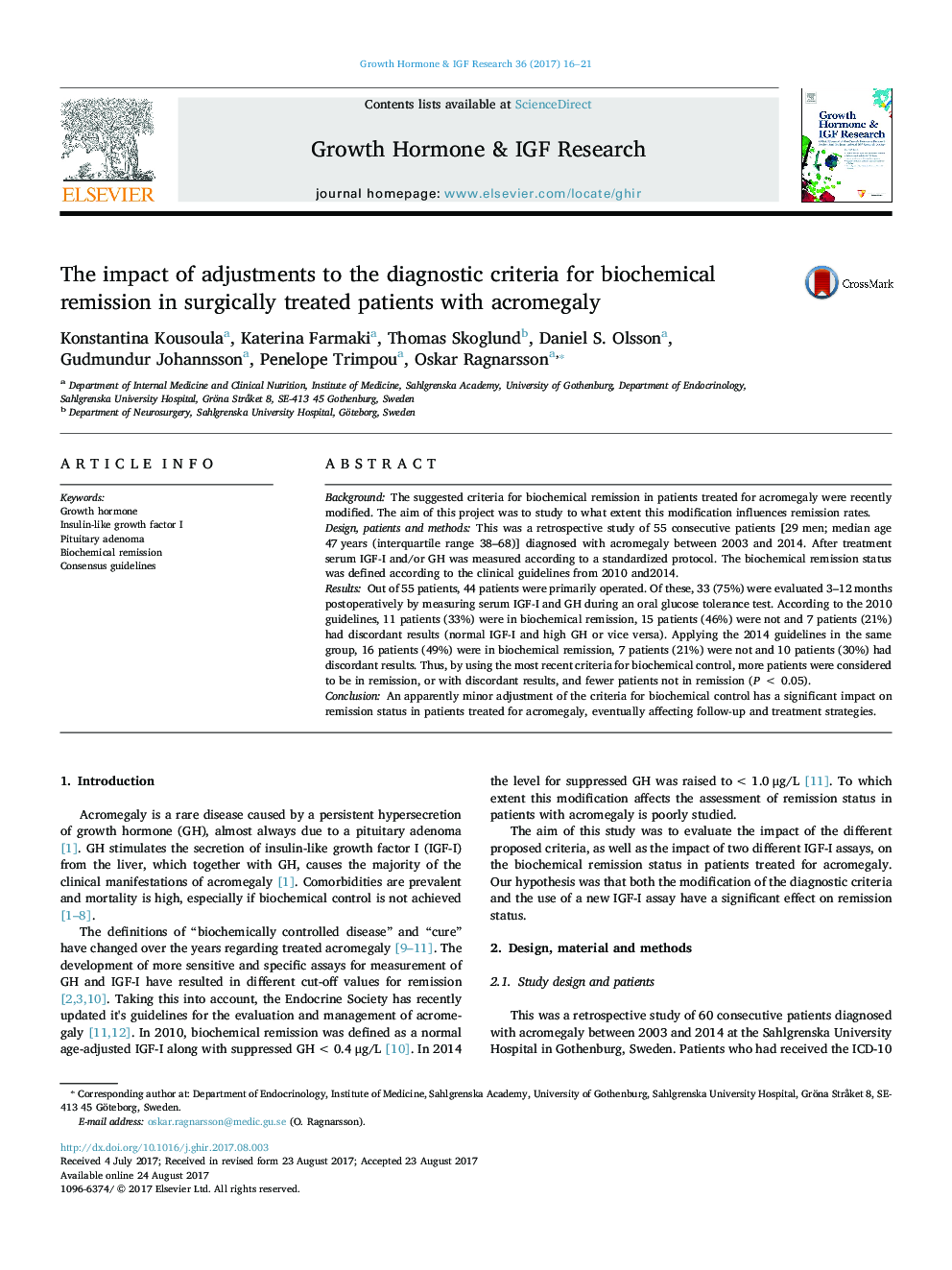| کد مقاله | کد نشریه | سال انتشار | مقاله انگلیسی | نسخه تمام متن |
|---|---|---|---|---|
| 5587864 | 1568945 | 2017 | 6 صفحه PDF | دانلود رایگان |
- The criteria for biochemical remission in acromegaly were recently modified.
- The aim was to analyze the impact of this modification on remission status.
- Data from 55 patients were analyzed retrospectively.
- Adjusting the criteria had a significant impact on remission status.
- An apparently minor modification may affect treatment-decision for acromegaly.
BackgroundThe suggested criteria for biochemical remission in patients treated for acromegaly were recently modified. The aim of this project was to study to what extent this modification influences remission rates.Design, patients and methodsThis was a retrospective study of 55 consecutive patients [29 men; median age 47Â years (interquartile range 38-68)] diagnosed with acromegaly between 2003 and 2014. After treatment serum IGF-I and/or GH was measured according to a standardized protocol. The biochemical remission status was defined according to the clinical guidelines from 2010 and2014.ResultsOut of 55 patients, 44 patients were primarily operated. Of these, 33 (75%) were evaluated 3-12Â months postoperatively by measuring serum IGF-I and GH during an oral glucose tolerance test. According to the 2010 guidelines, 11 patients (33%) were in biochemical remission, 15 patients (46%) were not and 7 patients (21%) had discordant results (normal IGF-I and high GH or vice versa). Applying the 2014 guidelines in the same group, 16 patients (49%) were in biochemical remission, 7 patients (21%) were not and 10 patients (30%) had discordant results. Thus, by using the most recent criteria for biochemical control, more patients were considered to be in remission, or with discordant results, and fewer patients not in remission (PÂ <Â 0.05).ConclusionAn apparently minor adjustment of the criteria for biochemical control has a significant impact on remission status in patients treated for acromegaly, eventually affecting follow-up and treatment strategies.
Journal: Growth Hormone & IGF Research - Volume 36, October 2017, Pages 16-21
